Introduction
Front
{{section_header}}{{section.name}}{{/section_header}}
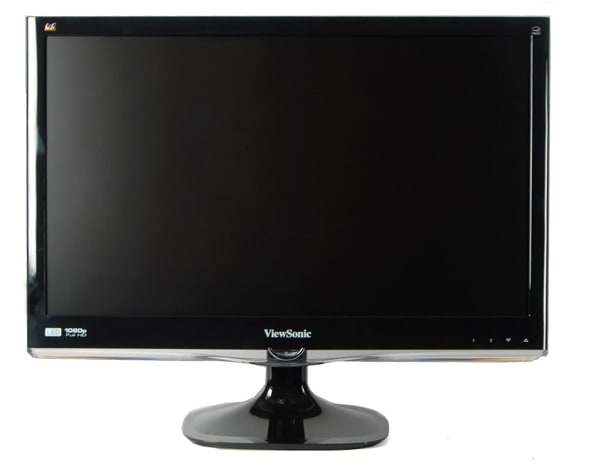
Back
{{section_header}}{{section.name}}{{/section_header}}

Sides
{{section_header}}{{section.name}}{{/section_header}}
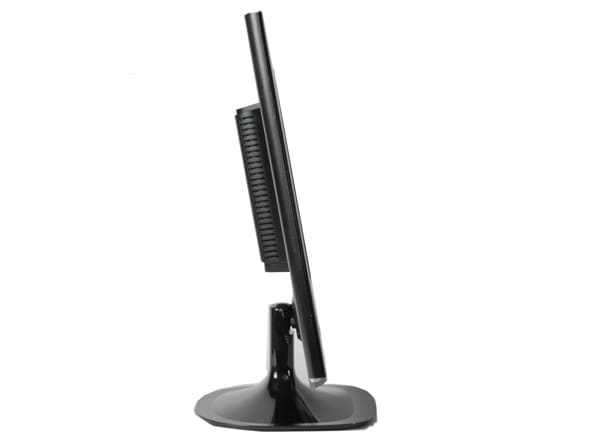
Size Comparisons
{{section_header}}{{section.name}}{{/section_header}}
In the Box
{{section_header}}{{section.name}}{{/section_header}}
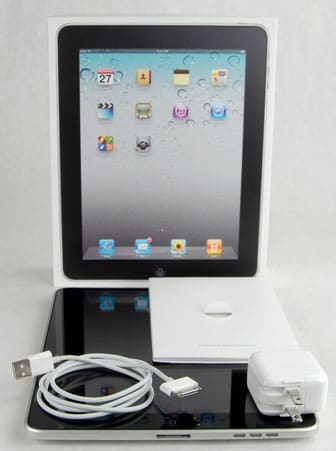
The Motorola Xoom comes packaged with a USB cable, tablet, manual and charger.
Handling
{{section_header}}{{section.name}}{{/section_header}}
The Xoom tablet can take a little getting used to in your hands, but ultimately, this isn't a bad thing. It's not incredibly heavy, but it has a good weight to it, and more often than not you're only going to be using one hand to support it, while the other operates the UI. Much like the iPad, you can buy specialized stands so you can free up your hands a bit, but so far the Xoom can feel a little clunky to handle. Thankfully the screen is responsive, so you won't run into problems in that regard.
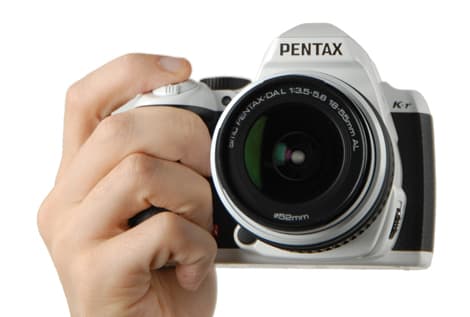
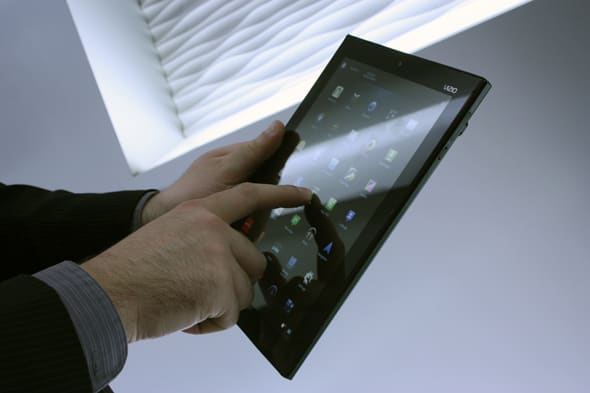
Screen
{{section_header}}{{section.name}}{{/section_header}}
Much like the iPad 2, the Motorola Xoom employs a backlit LCD screen that comes with all of the advantages and disadvantages of that specific technology. Namely, it is extremely reflective, and easily washed out by the sun or bright light. Its 720p resolution will give you incredible detail, and touch-sensitive controls will allow you to make full use of a litany of apps and virtual keyboard.
Because the UI is touch-based, all of your interaction with the Xoom will be conducted through the screen itself. While it's a great system to have, be mindful that fingerprints will be a big problem for you if that sort of thing drives you up the wall. There really isn't much you can do to avoid this, lest you pay no mind to looking silly with specialized gloves. After all that, the screen is very responsive to touch, and you won't have to press down hard like you do with other, cheaper tablets.

Indoor & Outdoor Use
{{section_header}}{{section.name}}{{/section_header}}
Chances are good that you're going to be bringing your Xoom out into the world, so we must warn you that like so many other LCD devices we've reviewed here, there is a good chance that the image displayed on the Xoom's screen will get washed out in direct sunlight, as well as showing a distracting reflection. Some screens make small efforts to reduce glare and reflectivity, but so far the LCD screened tablets don't do very well in this regard, but your mileage may vary.
Controls
{{section_header}}{{section.name}}{{/section_header}}
Despite the fact that more than 99% of your interaction with the Xoom will occur via the touchscreen, there are only very limited physical controls, located on the side and back of the tablet. Unfortunately, they encompass volume and power control, and that's it. To switch screens, you can flick your finger like you were turning a page, and if you want to open a program or app, you simply tap the icon lightly. In apps that allow it, you can pinch to zoom or rotate, and flick to pan or turn a page.
The touchscreen is very responsive and precise, and you should have no trouble acclimating yourself to the interface. The virtual keyboard is nice, if a bit slow to use by the very nature of the thing. Like the iPad and iPad 2, there is very little to no tactile feedback. Still, the user interface of Android Honeycomb is very well designed, and much more visually appealing than that of iOS (the iPad's operating system).
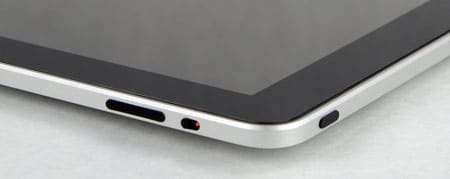
The controls on the top right side of the iPad body: volume, lock and power.
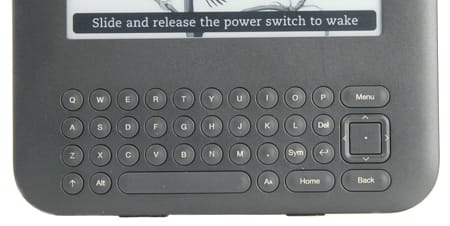
Possibly one of the cooler things about the {{product.name}} is the fact that in addition to using a virtual keyboard in several different languages (we played around in chat with the Russian keyboard), you can actually use speech-to-text in many languages. In the past, programs that support this have been somewhat clunky and easily fooled, but when using the Mandarin Chinese speech-to-text, it even got the tones right. After we confirmed with the linguists on staff, we can tell you that this is outstanding.
On top of those input options, there is also the somewhat unique ability for the Xoom and the iPad to help those with special needs and disabilities to some good resultsby employing the vast talent available to {{product.model}} owners via the Android market. These apps are relatively new, and much fewer in number in the Android market, but they are a very good thing to have available.
Connectivity
{{section_header}}{{section.name}}{{/section_header}}
In terms of connectivity, it's really hard to knock a tablet that can use WiFi, 3G and computer transfers via USB that doesn't marry you to a frustrating program like iTunes. Still, the {{product.name}} takes its product loyalty a little far, given that you have to download a bunch of software just to get it to work with a Mac computer.

Here we see a Lightning dock in its natural habitat.
If you have a PC, the transfer process is easy, as you do not have to install much in the way of software, and once you do that you can drag and drop files onto your tablet. The biggest downside is that the microUSB card slot is largely for show, as the {{product.name}} does not currently allow you to use it without jailbreaking your tablet. We don't recommend doing this, but what you do with your tablet is no business of ours.
Battery Life
{{section_header}}{{section.name}}{{/section_header}}
The {{product.name}} has a battery that will keep your tablet working for hours, even days at a time. In our tests, it was able to play audio continuously for over 24 hours, leaving a charge of 67% (meaning it can play audio for about 3 days, 3 hours straight). Keep in mind, too, that this is with the backlight cranked to maximum, so if you turn this down a bit, you may be able to squeeze a little more juice out of the battery if you can keep it bright enough to see wherever you are.
When reading eBooks, the {{product.model}} managed to do well enough, lasting around 8 hours of constant reading. Keep in mind, we disable WiFi and crank the backlight for our testing, so your mileage may vary.
Displaying video was also a breeze for the {{product.name}}, as it lasted just over 8 hours of constant playback of one of the worst movies known to man. After that (and who could blame it, really?) it shut itself down.
Reading Books
{{section_header}}{{section.name}}{{/section_header}}
This one's a bit tricky, as there are several different apps that you might use for reading books, and each have their own control scheme. It's certainly possible that you will have a handful of apps to read eBooks if you have content from the Borders eBook app, or the Amazon Kindle app, or the Barnes & Noble app... There are a bunch of apps and interfaces, but you won't be hindered by the Xoom itself in any way, it's just a pain dealing with several apps that all do the same thing, and have exclusive content. If you have a book that can only be found on one store, it won't work with the other reader apps.
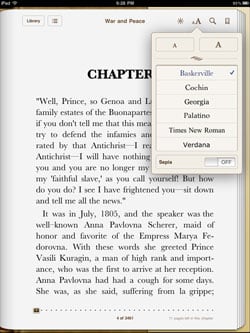
The iBooks program offers a range of controls for font and text size
For the most part, the popular stores have similar control schemes, and more often than not you'll be able to flick your finger to turn pages much like you would an actual book. For most eBooks, you can control the size of the fonts (so long as it's a supported file type, and not a .pdf), and even the orientations of the tablet itself, allowing you to customize your reading experience.
Buying Books
{{section_header}}{{section.name}}{{/section_header}}
Buying books is almost no different on the Android operating system than it is on the iOS in that many of the bookstores you are likely to access will make you go through their apps, so the experience really isn't all that different on the Xoom. However, due to the nature of the operating system, you will probably have to install multiple apps to get some of the content you want, which can get annoying.
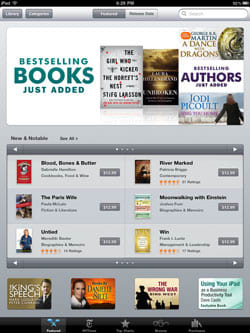
Books can be purchased on the iPad through the iTunes store
In terms of ease of use, a child could easily be able to pick out a book with the touchscreen, as many times it comes down to pointing on the screen once your billing information is stored with the vendor.
eBook Formats
{{section_header}}{{section.name}}{{/section_header}}
Because the buying and reading of eBooks must be done with either the proprietary software or their native applications, you could theoretically support almost any format so long as it had an app in the Android Market. Consequently, this could get a little frustrating if you have several eBook reader apps scattered on your app page, but honestly that's just the nature of the beast. The other Android-based tablets deal with the same issues, and even the iPad is no stranger to this problem.
{{product.manufacturer_specs['eBook Formats Image']}}
Newspapers & Magazines
{{section_header}}{{section.name}}{{/section_header}}
Much like the Samsung Galaxy Tab, which also uses the Android OS, the Motorola Xoom uses apps instead of a true market subscription service. You can download these apps from the Android Marketplace.
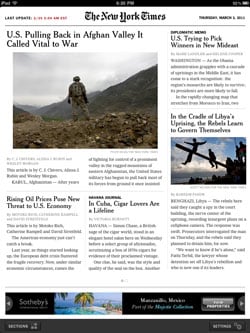
The New York Times is available on the iPad through their own app
eBook Battery Life
{{section_header}}{{section.name}}{{/section_header}}
{{product.manufacturer_specs['eBook Battery Life Image']}}
Music & Audio Controls
{{section_header}}{{section.name}}{{/section_header}}
The Motorola Xoom runs Android OS 3.0 (aka Honeycomb), which includes the sleek, visually attractive music player described in this section. The player shows all the pertinent information on the track or cover art, and the controls are always on the bottom of the screen, wherever it may be oriented.
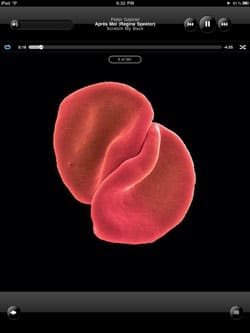
The iPod app shows the cover art while playing music
Probably one of the best things about the Android OS is that if every you run into a proprietary feature that you don't like, you can always find another one in the Android market. If for any reason you don't like the audio player included with the Xoom tablet, you can always download another one with a different user interface.
Music & Audio Management
{{section_header}}{{section.name}}{{/section_header}}
The music playback and control system on the Motorola Xoom is just absolutely beautiful and functional to boot. Not only can you scrub through album covers and search by name, but you can create playlists, scrub through tracks and manage your files easily by touch. Like every other control on the Xoom, the audio controls are via the touchscreen only, but you won't be wanting for an easier interface.
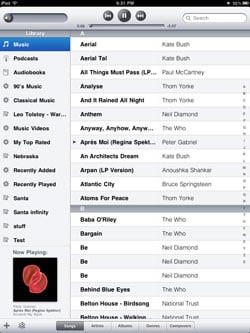
Audio files can be sorted by title, artist, album, genre or composer
However, sorting through album covers can be a pain if you have a bunch. Thankfully, you can change up your sorting options if you'd like.
Music & Audio Formats
Music & Audio Battery Life
Video Controls
{{section_header}}{{section.name}}{{/section_header}}
The {{product.name}}'s video controls are almost identical to its audio controls, using a touch interface that is responsive and allows you to scrub through your files with the touch of your finger. There aren't many video processing options, but then again, it's a tablet; asking for local dimming or the latest and greatest features is a little overkill.

Video Management
{{section_header}}{{section.name}}{{/section_header}}
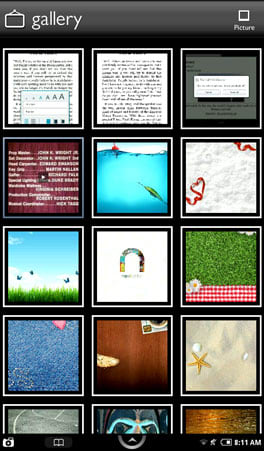
The gallery is used to navigate videos, and only offers thumbnails
Video Formats
Internet Video
{{section_header}}{{section.name}}{{/section_header}}
Because the {{product.name}} has native support for flash, allowing you to watch clips of last night's big game if you'd like. It's admittedly a battery destroyer, but we're big fans of the {{product.model}}'s support for a file format that has become ubiquitous on the internet. After all, how else are you going to show your friends the video of the cat playing a piano, or the latest sensation to hit the 'net?

Google provides decent support for streaming content as their interface works very well, and their interface is very intuitive and responsive. There are a couple minor bugs to work out with YouTube, but other than that, internet videos work much like the way the {{product.name}} handles normal video files on the unit itself: you can touch to scrub through a file, and where applicable, you can have the same controls on the bottom of the screen.
Video Battery Life
{{section_header}}{{section.name}}{{/section_header}}
Despite only having Gmail pre-loaded onto the device at startup, the user interface for the application is outstanding. Not only is the interface really well laid-out, but most of the additional features used by Gmail work as well, including the video application.
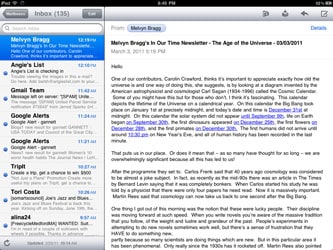
The iPad email app is basic, but adequate for most users
If you're a user of another service that can be accessed via an internet browser, you should have no troubles accessing your email, though it's unlikely that your experience with it will match the native support for gmail. There also may be an app on the Android Marketplace if you are willing to search for it.
Web Browsing
{{section_header}}{{section.name}}{{/section_header}}
The web browser doesn't look too much different than Google's flagship browser, Chrome, but it does have a different skin to fit into the whole Android image. The web browser allows for an experience much like what you'd get on a computer, except that you're browsing with your finger on the screen. The virtual keyboard is large enough that you should be able to hit each key without much difficulty, and the {{product.name}} even supports flash, which the iPad was unable to do previously.
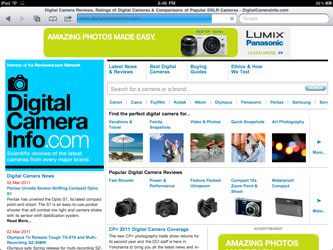
The iPad boasts a fully featured Safari web browser
Searching for websites is easy with the enlarged virtual keyboard, and clicking links shouldn't be terribly difficult, even if they can appear a bit small. Should this provide you any trouble, you can always pinch to zoom to enlarge the site so you won't hit the wrong link. The scrolling in the browser works much the same way as it does with reading .pdf documents, by flicking your finger across the screen you can scroll along the horizontal or vertical axis. Should you need to type in another language, you can always tap the keyboard button on the bottom of the virtual keyboard and select your language.
Internet Apps
{{section_header}}{{section.name}}{{/section_header}}
Where to begin? The Android Market gives the Xoom an absolutely massive number of applications to install on the tablet and they do pretty much anything you could ever ask. While there isn't as many apps as there are in the iTunes store, you shouldn't be disappointed with the Android Market, after all, there are thousands upon thousands of apps available.

We should warn you that there are some characters out there with ill-intent, and that in the past, viruses have been transmitted via a free version of a high-priced application, so be wary of these if you run across them on the market. Google has been pretty good about preventing these through banning apps and updating their OS software though, so if you can't decide to get something, wait a day to see if it's still there. If it isn't, it's probably not a virus.
Other Internet Features
{{section_header}}{{section.name}}{{/section_header}}
{{product.manufacturer_specs['Other Internet Features Image']}}
Device & Specs
{{section_header}}{{section.name}}{{/section_header}}
Someone hit the bell, because this is the matchup we've been waiting for: the best of Android versus the best of iOS devices. Round 1 will concern which has the better device, and from what we can see, the {{product.name}} is absolutely pummeling the iPad with a higher DPI, bigger internal hard drive and the support of a network with better support nationwide than AT&T. Both devices have 2 cameras, similarly decent processors, HDMI output and a great user interface, so you can't go wrong with either. Still, if you're looking for raw performance, look no further than the {{product.name}}.
Screen
{{section_header}}{{section.name}}{{/section_header}}
Both the iPad and the {{product.name}} have slightly differing screen sizes and intended orientations, but the {{product.name}} has the better resolution score. Unfortunately for the {{product.model}}, the iPad does get in a nice right hook here, as its screen is slightly less reflective than that of the Android tablet. Both tablets provide a crisp and bright image, with the iPad displaying a higher peak brightness than the {{product.name}}.
Battery
{{section_header}}{{section.name}}{{/section_header}}
As far as battery life is concerned, you will get about the same performance out of either, as they both can play audio for over 24 hours straight, last about 8 hours reading eBooks, and over 8 hours watching video. You really can't go wrong with either here.
eReader
{{section_header}}{{section.name}}{{/section_header}}
Because both devices are forced to use very similar apps from the same content providers, this one is a draw, as they even use the same interface.
Internet
{{section_header}}{{section.name}}{{/section_header}}
While the App Store for the iPad is huge, the Android Market is gaining ground rapidly, and soon both app stores will be nigh-indistinguishable, save for some third-party apps that will be available only to one store or the other. The edge here goes to the {{product.name}} for having a better web browser, pre-loaded Google apps and software support.
Device & Specs
{{section_header}}{{section.name}}{{/section_header}}
Comparing the devices themselves, it's very easy to see that, as the MSRPs suggest, the {{product.name}} is far, far better in every regard to the Cruz T301. It has a better processor, better screen, newer version of the Android OS, better battery and better interface. This is an easy category to call: the {{product.name}} is better than the T301 here.
Screen
{{section_header}}{{section.name}}{{/section_header}}
This one is a personal preference sort of comparison, because the screens are so different. They both respond to touch well enough (though the Xoom is much more sensitive) and they have similar DPI. They both reflect a ton of light and in a really distracting manner. However, the biggest difference between the two screens is sheer size. While the Xoom has a 10.1-inch screen, the Cruz only sports an 8-inch display. You can't really fit either in your pocket, but if size is a concern to you, we felt like we should point out the difference.
Battery
{{section_header}}{{section.name}}{{/section_header}}
The battery of the Cruz tablet just isn't strong enough to carry it far, and it shows when compared to the Xoom; the {{product.name}} lasts more than double the length of time the Cruz tablet does when watching video and significantly longer with eBooks. If battery longevity is important to you, stick with the {{product.name}}.
eReader
{{section_header}}{{section.name}}{{/section_header}}
The eReader experience isn't terribly different between the two tablets, although performance starts to be a big issue here; the Cruz tablet just isn't as sensitive as the {{product.name}}, so it can sometimes take a few presses to get the page to turn. Also, because the processor is weaker, there are loading times in between pages of text, which is disappointing at best. If you like reading eBooks, the {{product.name}} is a better bet, even though the Cruz does manage to struggle its way through performing this operation.
Internet
{{section_header}}{{section.name}}{{/section_header}}
The {{product.name}} wins this matchup as well, as its dual-core processor allows it to handle web browsing and content much more efficiently than the Cruz tablet, and consequently, you can do more with the apps found on the Android Market (the Cruz has a pared-down market to buy apps that are compatible with it).
Device & Specs
{{section_header}}{{section.name}}{{/section_header}}
The two devices are about as different as you can get, with the DX sporting a massive eInk Pearl display, physical controls and very limited processing power. The {{product.name}} is very different, but then again, the two tablets were meant for different uses. Picking one based on device performance alone really only matters if you're looking for a tablet only to read books.
Screen
{{section_header}}{{section.name}}{{/section_header}}
The huge, eInk Pearl screen of the DX is not only more detailed, but also far less reflective than the {{product.name}}. Granted, it's not a 720p touchscreen with multitouch interface, but it gets the job done and is extraordinary when it comes to legibility and performance in high sunlight. The Kindle DX will be much more readable in most lighting environments as it is not a backlit LCD display that gets washed out in the sun.
Battery
{{section_header}}{{section.name}}{{/section_header}}
Despite the good battery life of the {{product.name}}, it really can't compare to the performance offered by the Kindle DX. Because it doesn't have a backlight, and its screen doesn't draw that much power, the DX can read books for days on end, as well as listen to music for a long time period before having to recharge. If you're going on an intercontinental flight, the DX may be the better pick here.
eReader
{{section_header}}{{section.name}}{{/section_header}}
This one is tough, but eventually it really boils down to how much you read, and in what type of lighting. If you want to go outside, go in varying brightnesses or like to read huge novels, the Kindle DX is absolutely the clear choice, as its eInk screen looks much like an actual printed page, and only uses ambient light to make the screen visible. {{product.name}} owners will notice that their picture gets washed out in bright sunlight, as most LCD-screened tablets do. Though the {{product.name}} offers a more natural interface, the manual controls of the DX are responsive enough, and really won't leave you wanting for a better eReader.
Internet
{{section_header}}{{section.name}}{{/section_header}}
This one goes to the {{product.name}}, no question. The Kindle DX just isn't ready for primetime with its limited internet features, but why should it have to be? It doesn't really need to. If you're looking for apps and other internet content, the {{product.name}} is the better buy.
Conclusion
Performance
It's hard to outperform the {{product.name}}, as it's very clear that the tablet continues the trend of Android devices trying to overpower their iOS counterparts. The dual-core processor lets the tablet keep up with the demands of the user, and the possibilities with the tablet are endless.
Screen Performance
If you can pick out a weak point in the {{product.name}}'s design, the screen would be it. While the resolution, color gamut and contrast are fairly good, the reflectiveness and the somewhat weak peak brightness will make use of the {{product.name}} outdoors a frustrating experience. Still, it should be fine if you keep the tablet indoors, where the light isn't as harsh or bright.
Battery Life
Surprisingly enough, the battery life isn't too bad with the {{product.name}}, as it can play video and read eBooks for over 8 hours at a time even with the backlight cranked up to maximum, and it can also play audio files for over 24 hours straight (mind you, the tablet will turn the screen off if you listen for extended periods of time. It will never rival the battery life of an eReader with an eInk screen, but as far as LCD-screened tablets go, the {{product.model}} does fairly well.
Ereader:
The eReader function of the {{product.name}} is essentially whatever the stores like Amazon and Borders made it to be, so it's hard to knock Motorola for any shortcomings here. Still, the experience is a great one, with intuitive controls and a bright, legible screen that will satisfy just about anyone who requires picture quality from their tablet.
Audio & Video:
The {{product.name}} loses a little bit of ground to the iPad here, as its music management system, while pretty, isn't nearly as functional as the iTunes media program. Still, playing movies and music is an easy task, and it has the battery life to keep it up for long periods of time. You should have no problems with this device on a long bus ride or a commute in a carpool.
Email & Web Browsing:
Another area in which the {{product.name}} really shines is the email and web browsing that have been pre-loaded into the tablet itself. The user interface and input methods are crazily thorough and intuitive, and many of the problems reported with the iOS devices like keyboard size and interface issues are not a problem for the {{product.name}}, and on top of that, it even supports flash (where the iPad does not).
Meet the tester
A seasoned writer and professional photographer, Chris reviews cameras, headphones, smartphones, laptops, and lenses. Educated in Political Science and Linguistics, Chris can often be found building a robot army, snowboarding, or getting ink.
Checking our work.
Our team is here for one purpose: to help you buy the best stuff and love what you own. Our writers, editors, and lab technicians obsess over the products we cover to make sure you're confident and satisfied. Have a different opinion about something we recommend? Email us and we'll compare notes.
Shoot us an email
